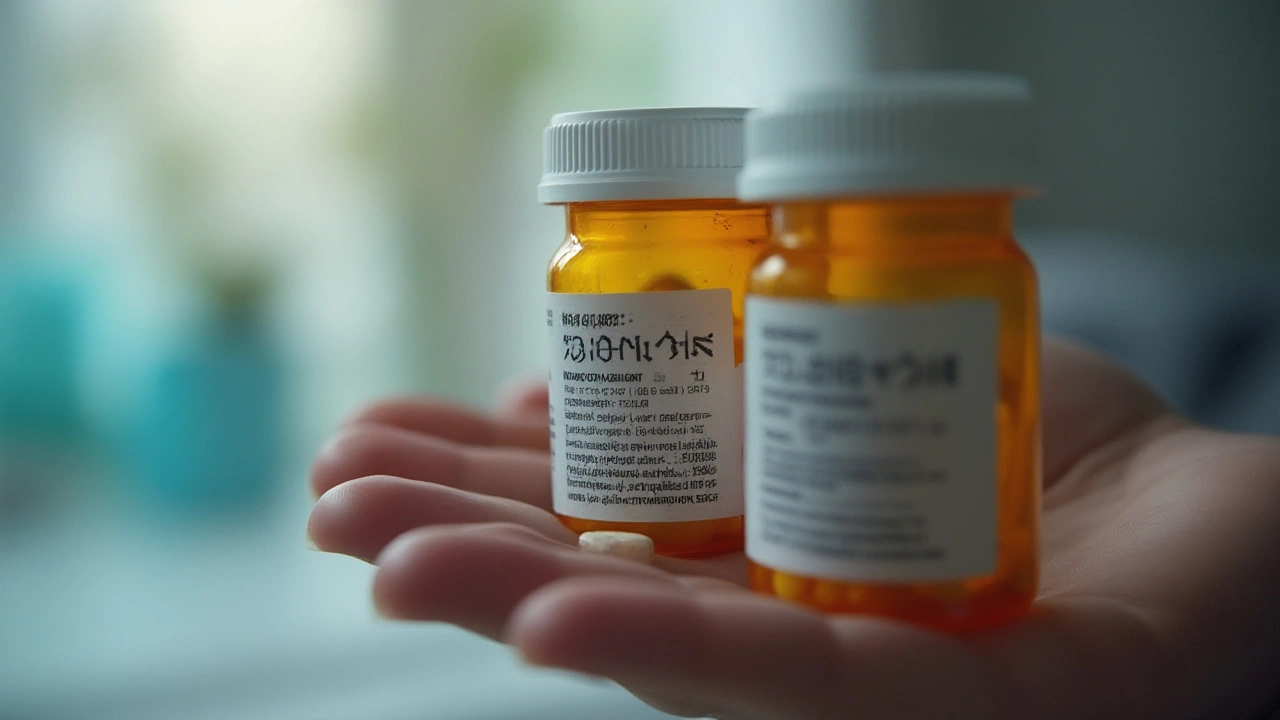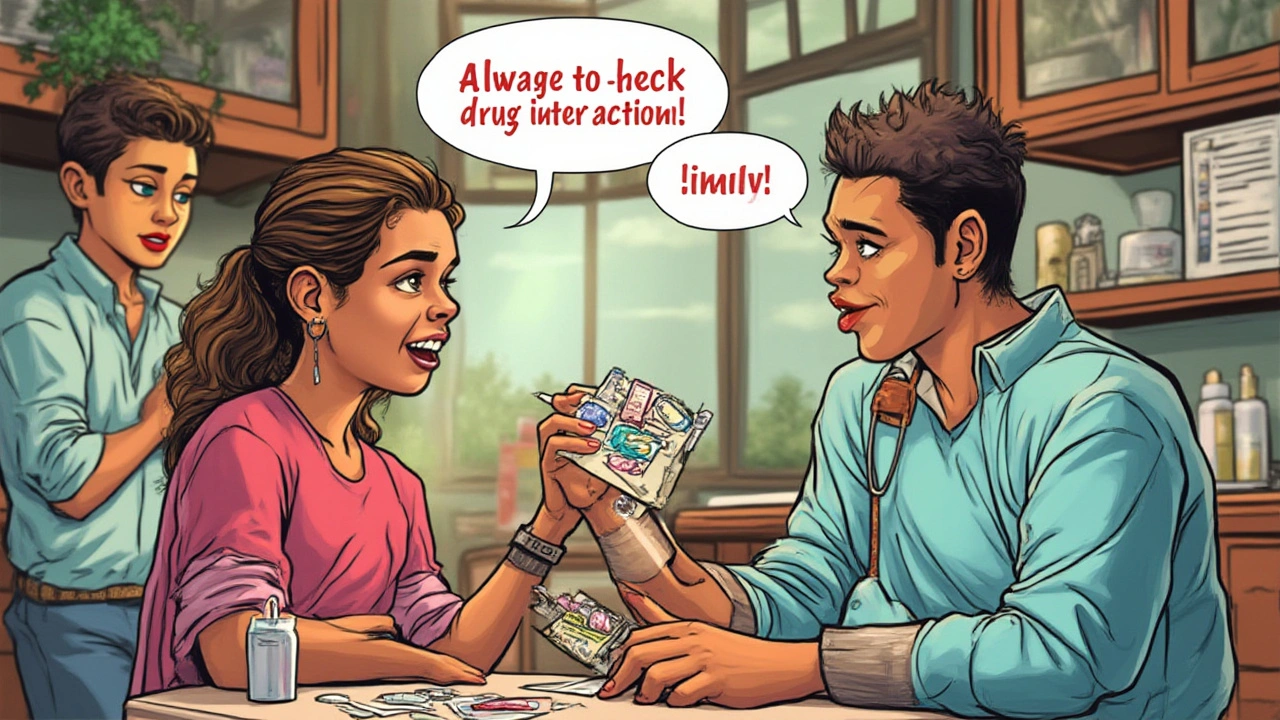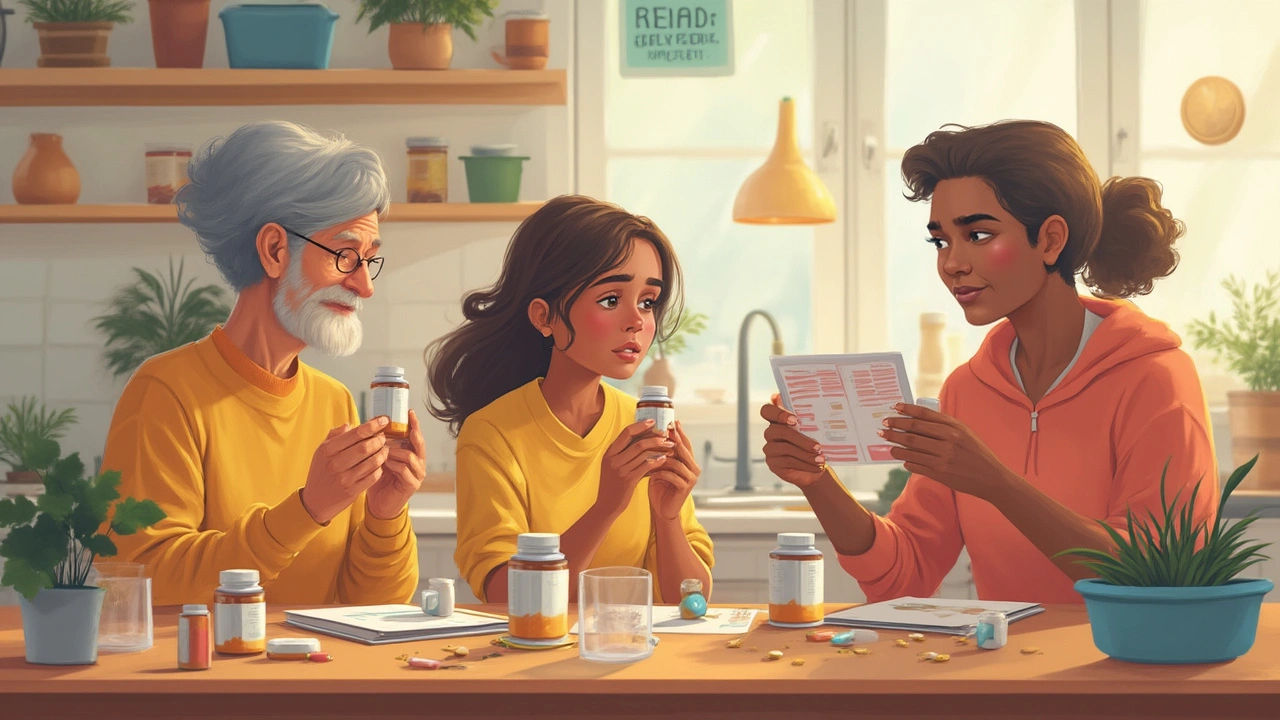Last week, I heard about a guy mixing cold and flu tablets with ibuprofen, thinking he’d shake off his symptoms faster. Instead, he ended up with a nosebleed and a pounding headache that landed him at Auckland Hospital. OTC drugs—those handy pills you buy at the chemist without a prescription—feel harmless. They aren’t. Messing around without reading the label or stacking the wrong meds can easily send you to the ER instead of back to work. Here’s how to avoid becoming that guy.
What Are OTC Drugs and Why You Should Care
Walk into pretty much any supermarket or pharmacy in New Zealand, and you’re staring down a wall of over-the-counter medicines: painkillers like panadol and nurofen, allergy fixes, cough syrups, antacids, antihistamines, sleep aids—the works. The big problem? They’re so easy to get, it’s tempting to forget they’re actual drugs, not just fizzy drinks in fancy packaging. But did you know that paracetamol poisoning is one of the leading causes of acute liver failure here? And if you check Medsafe’s reports, you’ll notice that mishaps with cold and flu remedies send hundreds of people to emergency rooms in NZ every year. Kids stumble onto their grandparents’ pain meds. Teenagers experiment with too much codeine cough syrup. Even adults take caffeine-packed headache tablets late at night, not realizing they’ll be staring at their ceiling for hours. OTC drugs are handy, but they’ll hurt you if you don’t treat them with respect.
Most folks think "If it’s over the counter, it’s safe at any dose." That’s not even close. Paracetamol, for example, is easy to overdose on without realizing it. Take a flu capsule in the morning, pop a headache pill an hour later, and then chase it with a night-time cold and flu sachet—the combined paracetamol totals could already be damaging your liver, and you wouldn’t even feel it until later. Unlike antibiotics or prescription opioids, nobody tells you exactly how much or how often to take. That’s why learning the basics about these meds—what they’re for, how they work, why they’re risky if misused—is so important. I always check what’s actually in any “all-in-one” cold remedy, because the words on the front of the box aren’t exactly designed to warn you about dangers.
And here’s the thing—different people react in different ways. I’ve got mates who can handle codeine for a sore back, but if my daughter Zara took even a child’s dose of codeine cough syrup, she’d end up sleepy and wobbly for half a day. Kids, the elderly, folks with asthma or heart issues—everyone needs to be extra careful. Don’t copy someone else’s dose just because it “worked for them.” And always keep in mind that pharmacies aren’t just shops—they’re staffed by trained pharmacists who can tell you if that “miracle” sleep aid will make you drowsy at work or clash with your blood pressure meds.
Most Common Ways People Harm Themselves with OTC Medicine
Let’s get honest: nearly all the accidents with OTC drugs happen because people either don’t read the leaflet, pile up too many different medicines at once, or try to “hack” their way to recovery. Maybe you’re in a rush to get back to the gym, so you swallow some extra ibuprofen after your morning run. Maybe you’re caring for a sick toddler at 3am, desperate for sleep, and don’t stop to check if you’re giving her the right cupful of Panadol. Mistakes like these are everywhere—even among smart, careful adults.
One big mistake? Mixing meds without noticing shared ingredients. About every other cold and flu pill on the New Zealand shelves contains paracetamol, but the packets have huge labels shouting "triple action" or "maximum strength," while the details (in tiny print) list the amounts. If you take a separate painkiller on top, you can blow past safe limits just like that. The same goes for antihistamines. Take multiple allergy remedies and you might feel drowsy, confused, or jittery, depending on the type.
Another common slip-up is doubling the dose because symptoms aren’t gone fast enough. It hardly ever works that way; more does not mean better. Paracetamol, ibuprofen, and aspirin all have very specific safe limits for a reason. Your liver can only process about 4 grams of paracetamol in 24 hours—go over and you risk serious organ damage. For ibuprofen, going above the safe limit can hurt your stomach lining or your kidneys. These aren’t rare cases—they fill up Kiwi hospitals every week. It’s not just the older generation; teenagers popping extra pills after rugby or high school exams are at real risk, too.
And don’t get me started on "natural" supplements or herbal fixes from the health store. The rules are different, and these can sometimes clash with mainstream drugs in dangerous ways. For example, St. John’s Wort can change how your body breaks down allergy pills, the pill, or painkillers. Always keep your doctor or pharmacist in the loop if you mix alternative remedies with regular meds.
One last biggie: ignoring warning signs. If you pop a pill for a headache and suddenly feel breathless, dizzy, have heart palpitations, or break out in a rash, stop taking it. Don’t brush it off as a “bad batch,” because allergic reactions can happen suddenly—even to medicines you’ve taken before. I’ll never forget the time Thorne’s preschool mate tried a new cough syrup and swelled up like a balloon. His mum called 111, and thank goodness she acted fast. That’s why I always say—if something feels wrong, it probably is. Get checked.

How to Read Labels and Spot Hidden Dangers
Reading a medicine label isn’t like reading a menu. Drug companies know you’ll see the big brand name, the shiny color, maybe the promise of “fast relief”—but not much else, unless you hunt for details. So here’s how I handle it:
- Check the active ingredients and their amounts. If you see paracetamol, ibuprofen, codeine, diphenhydramine, or pseudoephedrine, ask yourself if you’re taking any of those in something else already. That’s the fastest way to spot “double-dosing.”
- Scan for the “dosage” section. This tells you how much and how often to take it. Don’t trust memory—different brands sometimes use different strengths. A single tablet might hold 500mg or 1000mg of paracetamol. Read carefully.
- Look for allergies or special warnings. You’ll see small print about not giving certain syrups to kids under 6, or avoiding sudafed if you have high blood pressure. Don’t gloss over this just because you “feel fine.”
- Watch for “may cause drowsiness” or “not for use with alcohol.” Many cold or sleep aids can make you sleepy—or dangerously uncoordinated, which is a problem if you plan to drive, work machinery, or supervise children.
- Store medicines safely, away from little hands. Too many parents keep cough syrups or painkillers on a kitchen bench for easy access—then wonder how a child managed to swallow half a bottle while their back was turned. Store everything high up and locked away.
- Double-check expiry dates. Medicines lose effectiveness over time, and expired pills can sometimes change chemically, especially in New Zealand’s damp winters or hot summers.
- When in doubt, ask. Don’t feel silly asking the pharmacist, even about seemingly basic questions. They see these issues every day and would rather spend two minutes answering your worries than see you come back with a real emergency.
I always take a photo of the front and back of any new medicine, so I can quickly re-check the instructions or ingredients. Makes life way easier when you’re in a panic at 2am next time someone in the house feels sick.
When to See a Doctor (And When to Stop DIY Treatment)
OTC drugs can fix little stuff—headaches after a long day, a sore back from moving boxes, a cough you can’t shake when winter hits—but there’s a line where self-care should end and actual medical help should begin. Recognizing that line saves lives.
If symptoms last more than a few days, even after regular medication, something’s up. For kids especially, don’t gamble—if your child has a fever for over 48 hours, is refusing to drink, is coughing so much they can’t sleep, or seems confused or lethargic, skip the next round of medicine and call your doctor or nurse help line. For adults, watch for anything unusual: shortness of breath, chest pain, severe tummy pain, or rashes with a fever. These are not “wait-and-see” moments.
And here’s a twist: most coughs from the common cold don’t need much medicine at all—plenty of rest, fluids, and time will do the job. Only go for cough syrup if you’re actually uncomfortable at night, and always check the label. Some syrups have codeine (not suitable for kids), while others just have sugar and flavoring.
I can’t stress enough—do not use old prescriptions “because they worked last time.” Medicines can change; your body can change. And if you’ve got heart disease, kidney issues, asthma, diabetes, or take regular medication for anything else, be doubly cautious about mixing in new stuff from the pharmacy shelf.
Here’s a quick rule I use with my own kids: if something feels worse after using over-the-counter meds, or if side effects crop up (like vomiting, rashes, swelling, or unexpected drowsiness), ring for help. Don’t play the hero. And if the person is unconscious, having trouble breathing, or unresponsive, call emergency services right away.

Safe Habits for Using OTC Medicine
The best way to avoid an ER trip is to build a few simple habits. First, keep a running list in your phone (or on a notepad) of what you’re taking, when you started, and how much. This isn’t just for forgetful folks—juggling kids’ doses, your own medicine, and partner’s vitamins can get confusing in the middle of a busy day. Set timers or reminders if you’re supposed to re-dose four or six hours later, so you don’t accidentally double up.
It’s smart to treat your bathroom medicine shelf like a mini-pharmacy: keep products you use regularly front and center, but store everything else out of sight, especially if you have small kids or teens in the house. Out of sight, out of mind really works.
Plan ahead for sick days. Stock up on simple remedies you know work for your family—but don’t buy huge boxes that’ll expire before you finish them. Choose the lowest effective dose, and avoid “combination” pills or syrups unless you know exactly what’s inside. More ingredients usually means higher risk of side-effects.
Never share your medicine. I know it sounds obvious, but when someone you love is hurting, it’s tempting to hand them your prescription painkiller, or let a mate have one of your anti-nausea tablets. Bad idea. And don’t be afraid to throw out expired or leftover medicines—pop them in a pharmacy disposal bin, not in your rubbish or down the loo.
If you travel, check the laws on which medicines you can bring into your destination country. Some countries, even Australia, have tough rules on medicines we take for granted in NZ. Always take your medicines in their original packaging with your name on them.
Finally, get comfortable asking questions—at the chemist’s, with your GP, or even from trusted health websites. If a new medicine makes you worry, reach out before you start. Life is too short to take risks with your own health, or your family’s.
OTC drugs are great tools when used wisely—but they’re not as simple as popping a lolly. By reading labels, watching doses, asking good questions, and respecting your body, you’ll avoid the hidden dangers that catch so many people off guard every year. Every family has a "near miss" story. Let’s not make it a regular thing.


